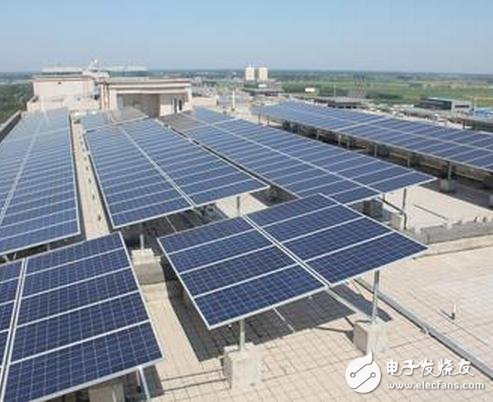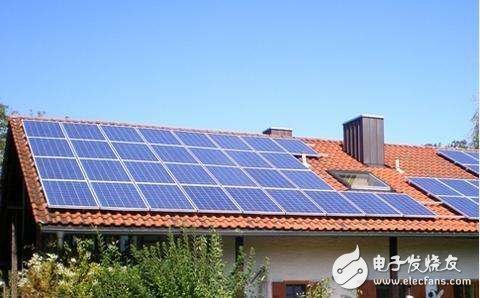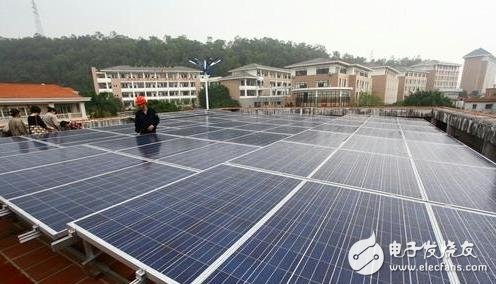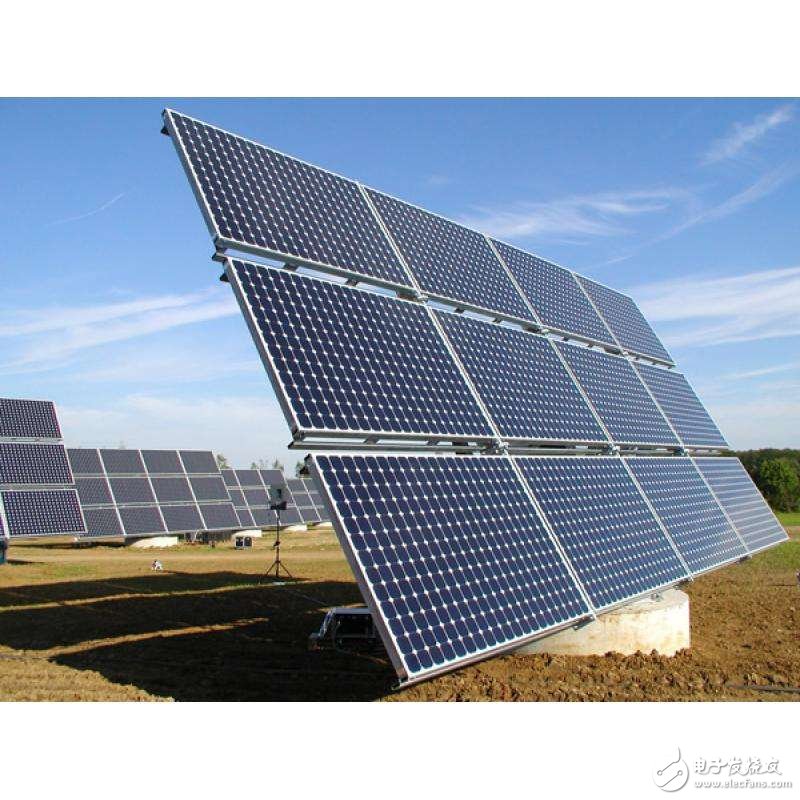Solar energy is the most abundant renewable energy in China. The theoretical estimate of solar radiant energy accepted by China's land is 1.47 & TImes; 10.8 billion kWh, which is the largest scale and industrialization potential after hydropower and wind power in China. renewable energy. With the strengthening of policy support and the continuous launch of the domestic market, China's PV industry has gradually stepped out of the trough, and in 2015 it has accelerated its recovery. The National Development and Reform Commission Energy Research Institute estimates that this year's new PV installed capacity will be about 15 million kilowatts, and the cumulative total will reach 43 million kilowatts, surpassing Germany to become the world's largest PV application country. In the next 2020, it will probably exceed 100 million kilowatts, and in 2030, it will exceed 400 million kilowatts, marking the era of large-scale application in China.
Then, compared with photovoltaic ground power stations, what is the safety of distributed photovoltaic power generation, which is closer to people's daily life?
From the perspective of use, the unique advantages of distributed photovoltaic power generation:1. Distributed photovoltaic power generation can achieve near-power supply without long-distance transmission, avoiding the loss of long-distance transmission lines;
2. Solar energy does not use fuel, and the running cost is very low;
3, solar power generation has no moving parts, is not easy to use damage, easy to maintain, especially suitable for unattended use;
4, solar power will not produce any waste, no pollution, noise and other public hazards, no adverse impact on the environment, is an ideal clean energy;
5. The solar power generation system has a short construction period, is convenient and flexible, and can add or reduce the solar array capacity arbitrarily according to the increase or decrease of the load to avoid waste. These advantages make the distributed photovoltaic power generation not have high operational difficulty and danger, and the safety is guaranteed, which provides realistic feasibility for widespread promotion.

However, from the perspective of operation and maintenance, distributed photovoltaic power generation is not completely safe and has no hidden dangers. Unlike large-scale ground power plants that are occupied independently, distributed photovoltaic power generation needs to be attached to residential buildings, industrial plants, warehouses, commercial buildings, school buildings, etc., and these building carriers are generally densely populated and equipped with relevant precision instruments and equipment. Or the characteristics of flammable substances are stored, so the requirements for safety performance of distributed photovoltaic power generation are more stringent. It is necessary to ensure that photovoltaic power generation does not affect the original production and living functions of these buildings, and does not pose safety hazards to personnel, production and materials. .
In order to avoid the occurrence of safety accidents, a series of preparatory work will be strictly carried out when designing the power station and selecting equipment.
First: Analyze the carrier building of the distributed photovoltaic power generation system, and make a reasonable and safe space planning. It is necessary to arrange special space areas to place photovoltaic modules and power distribution inverters and other power generation equipment, so as to avoid contact with non-professionals to avoid power generation equipment. Cause a safety incident.
Second: fully understand the quality of the selected equipment and the complete product certification, confirm the certification and certification quality obtained by the inverter, not only need to consider the EMC (electromagnetic compatibility) issue as an important consideration, if necessary, Auxiliary measures to prevent electromagnetic interference from the power generation equipment to the original electronic equipment. At the same time, it is necessary to set a grid-connected total circuit breaker that is easy to operate, lockable, and has obvious disconnection points at the inverter output summary point to ensure The personal safety of maintenance and maintenance personnel of power facilities shall prevent possible islanding effects.
Third: On the basis of completing the above requirements, increase the protection against fire, grounding and strong winds.
Fourth: On the other hand, in the normal operation of the distributed photovoltaic power generation system, we should insist on regular safety inspection of the power generation system, and continuously improve the intelligent operation and maintenance capability of the distributed photovoltaic power generation system, and all possible The safety fault is firstly fed back to improve the safety of the entire system while ensuring power generation efficiency. Specifically, in addition to the basic fire safety inspection measures, the PV system is also required to have the function of self-detection, identification of abnormalities and active stop of abnormal power generation string work, thereby reducing the possibility of fire. Any part of the power generation system, photovoltaic cells, string confluence, inverter equipment, etc., can be used as an installation application carrier for this intelligent self-checking and self-control function.
Through analysis, we can easily see that the overall safety of distributed photovoltaic power generation is trustworthy. With the continuous improvement of industry standards and specifications, distributed photovoltaic power generation has hidden dangers due to equipment quality problems and design and construction problems. It will inevitably become less and less, but because of the particularity of its own power generation mode, it is still necessary for the owners to care about the overall safety performance of the distributed photovoltaic power generation system and develop a good habit of regular maintenance.

In recent years, due to poor construction quality, lack of equipment selection, and lack of operation and maintenance in the later stage, distributed PV power plant safety accidents have occurred, especially in distributed PV power plant fire accidents combined with construction, which may cause personal injury. The huge loss of property should be especially valued by the industry. This paper mainly analyzes the safety risks of distributed PV power plants and the corresponding preventive measures from the perspective of equipment safety. Among them , the risk of distributed photovoltaic power plant equipment can be mainly divided into fire risk and natural disaster risk .
First, the fire risk 1) analysis of the cause of the fireThere are many photovoltaic power station equipments and high DC voltages. There are many fire safety hazards. In the event of a fire accident, it may cause serious damage to power station equipment, buildings and people in the building. The main factors causing fire accidents in distributed photovoltaic power plants are:
Component hot spot
The hot spot effect may cause the local temperature of the component to be as high as 100 ° C or more, causing the solder joint to melt, partially burn, and even cause a fire.
The main causes of hot spots on components are: partial occlusion of components, virtual soldering, air bubbles, and the like.
Component hot spot prevention measures include: selecting reliable components, equipped with an infrared camera, and timely surface cleaning. In addition, when severe hot spots occur, the components should be replaced in time to prevent the components from burning out.
Connector failure
Poor quality connectors, inter-plugs, and improper mounting can cause excessive contact resistance, which can cause overheating.
Connector burned
The main measures for overheating and burning of the connector are: selection of high-quality connectors, mutual insertion of connectors, use of professional installation tools, inspection by infrared camera, etc.
Virtual cable connection
There are many cable connection points in the photovoltaic power station. On the one hand, the unreliable connection may cause the contact resistance to be too large, causing overheating and burning. On the other hand, under the high DC voltage, the virtual connection of the cable is prone to DC arcing.
The virtual connection of the cable causes the combiner box to burn out
The main measures for the virtual connection of cables are: installation with professional tools and regular inspections.
Insulation failure
Cables are subject to wear, corrosion, damage, and long-term immersion and exposure, which may reduce the insulation performance, causing short-circuit and arcing of the positive and negative cables, resulting in fire.
Cable damage leads to reduced insulation performance
Cable immersion leads to reduced insulation performance
Cable insulation failure prevention measures mainly include: selecting special cables for photovoltaics, laying out standard cables, and regularly conducting cable insulation performance tests.

Among the DC side related equipment of the PV power plant, only the DC circuit breaker or the DC switch has an arc extinguishing function. When the circuit breaker is closed, directly plugging or unplugging the connector or insurance may cause arcing.
Replace the internal components of the combiner box or the array power failure detection specification operation: first measure the current with a clamp meter, then open the circuit breaker, and then confirm the current to 0 with the clamp meter, and finally disconnect the fuse, in the case of ensuring no electricity. Take action.
After replacing the internal components of the combiner box or after the array is detected, the power supply specification operation: first ensure the wiring is normal, close the fuse, and finally close the circuit breaker.
Inverter power failure detection specification operation: Disconnect the AC circuit breaker, rotate the DC switch to the "OFF" position, and operate without any electricity.
Power-on specification operation after inverter detection: first ensure that the wiring is normal, rotate the DC switch to the "ON" position, and finally close the AC circuit breaker.
2) Emergency plan for fire accidents
In order to respond quickly to fire accidents and reduce fire damage, PV power plants should be equipped with effective fire prevention facilities to establish special fire emergency plans.
Fire protection facilities should be installed at the power station site
The fire protection facilities on the site of distributed photovoltaic power plants shall include:
1) Automatic fire protection devices such as fire alarm systems and automatic fire extinguishing systems;
2) Fire extinguishers, fire hydrants, fire sand and other fire equipment;
3) Safety protective equipment such as gas masks, positive pressure breathing apparatus, and emergency medicines;
4) Emergency lighting equipment;
5) Communication tools and related address books.
Photovoltaic power plant fire equipment
Power station fire treatment program1) Report the person in charge immediately after the fire is discovered on the spot;
2) The person in charge of the organization organizes to view the fire situation and determine the location of the fire;
3) cut off the relevant power supply;
4) Take appropriate fire-fighting measures to extinguish the fire and control the spread of the fire;
5) When it is judged that the fire is uncontrollable, immediately call 119 to call for support and send someone to wait at the intersection.
Second, the summary of natural disaster risksThe safety prevention of distributed photovoltaic power plants should run through the whole life cycle including site selection, design, selection, construction, operation and maintenance. The owner and operation and maintenance personnel of the power station should adhere to the operation concept of “safety first, prevention firstâ€. , to eliminate security risks in the bud.

Gas Explosion-Proof Motor,Explosion Proof Motors,Gas Explosion Proof Motors,Explosion Proof Electric Motor
Yizheng Beide Material Co., Ltd. , https://www.beidevendor.com
